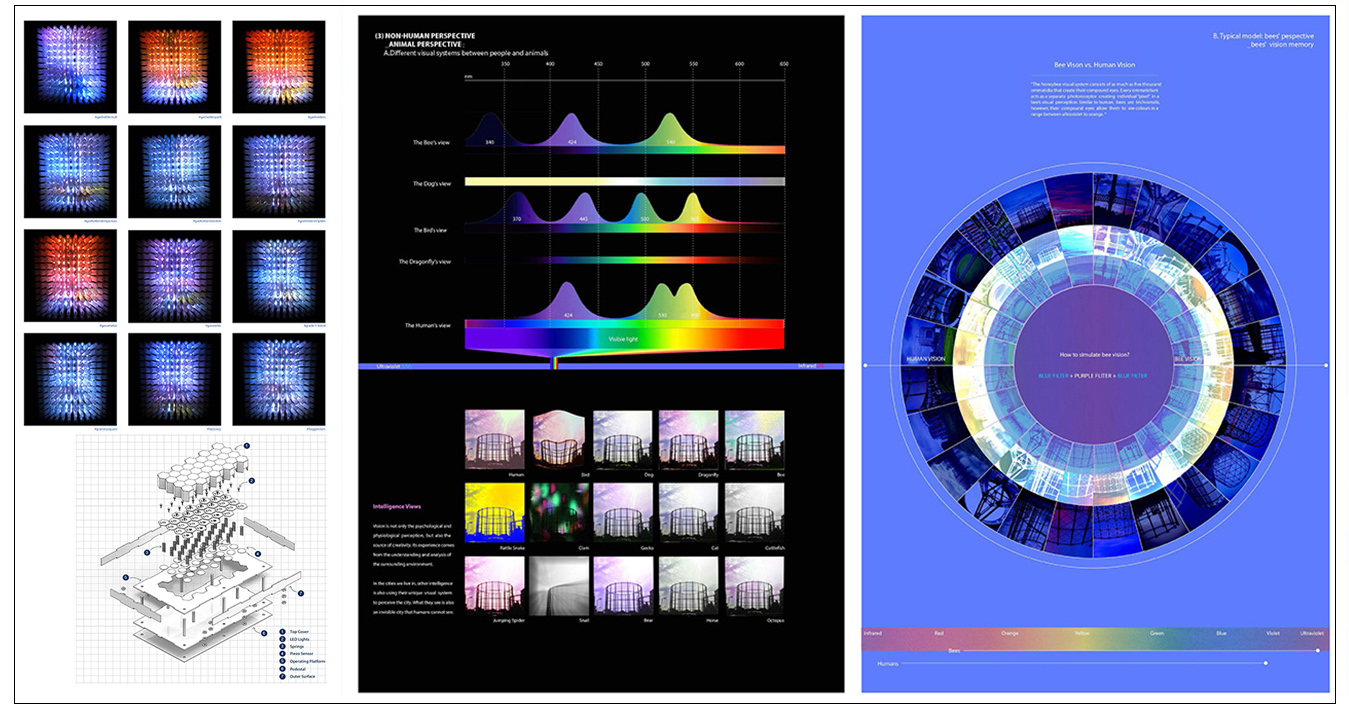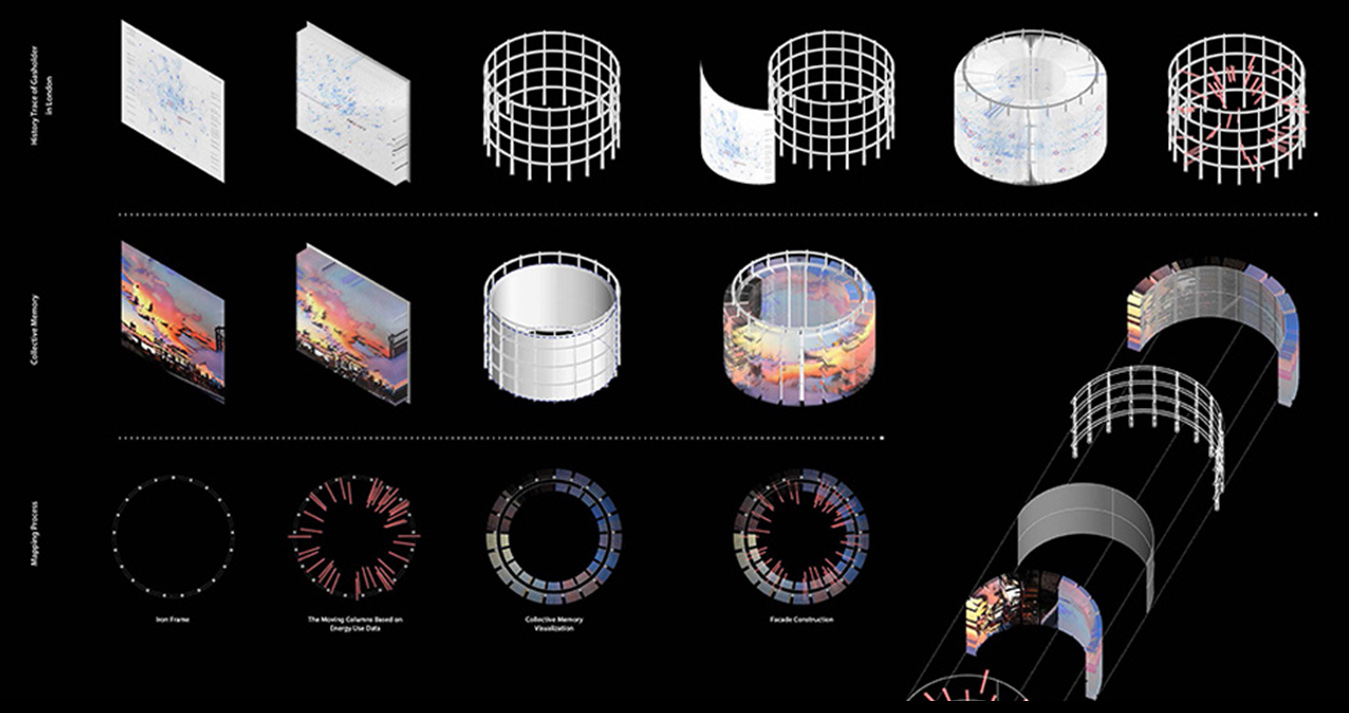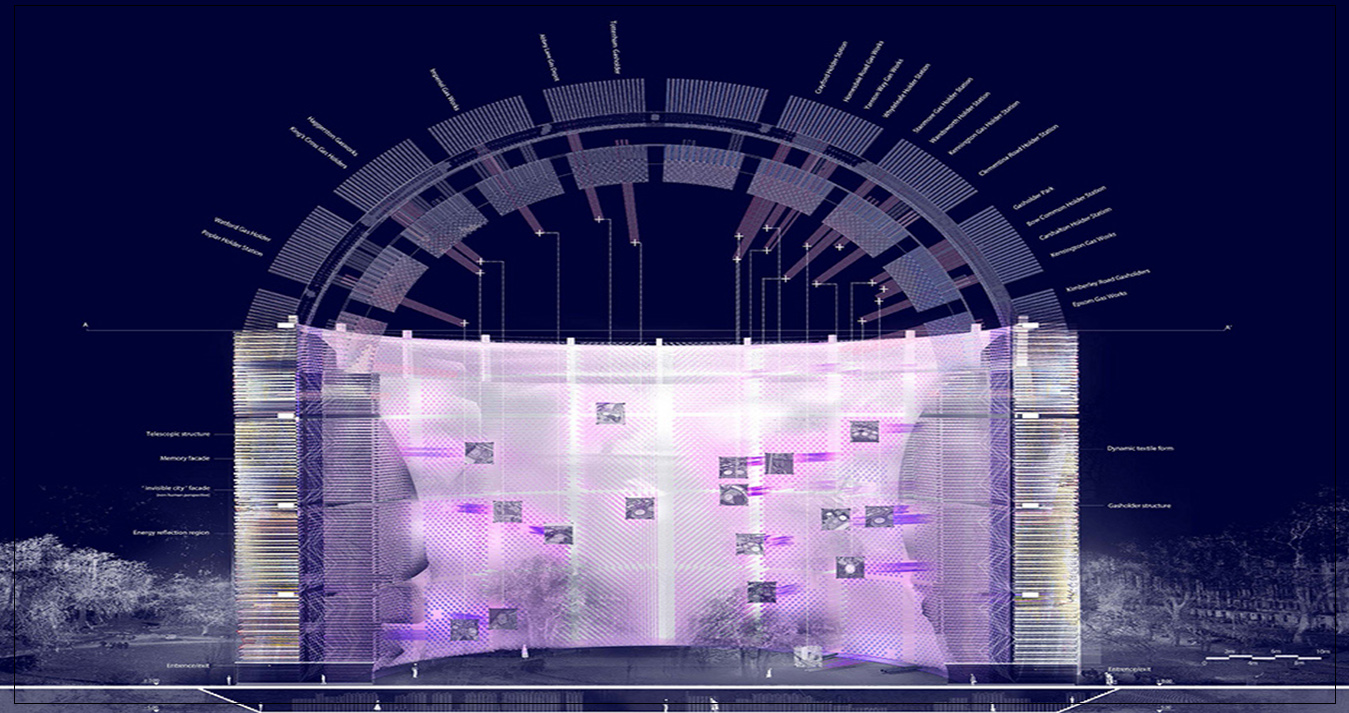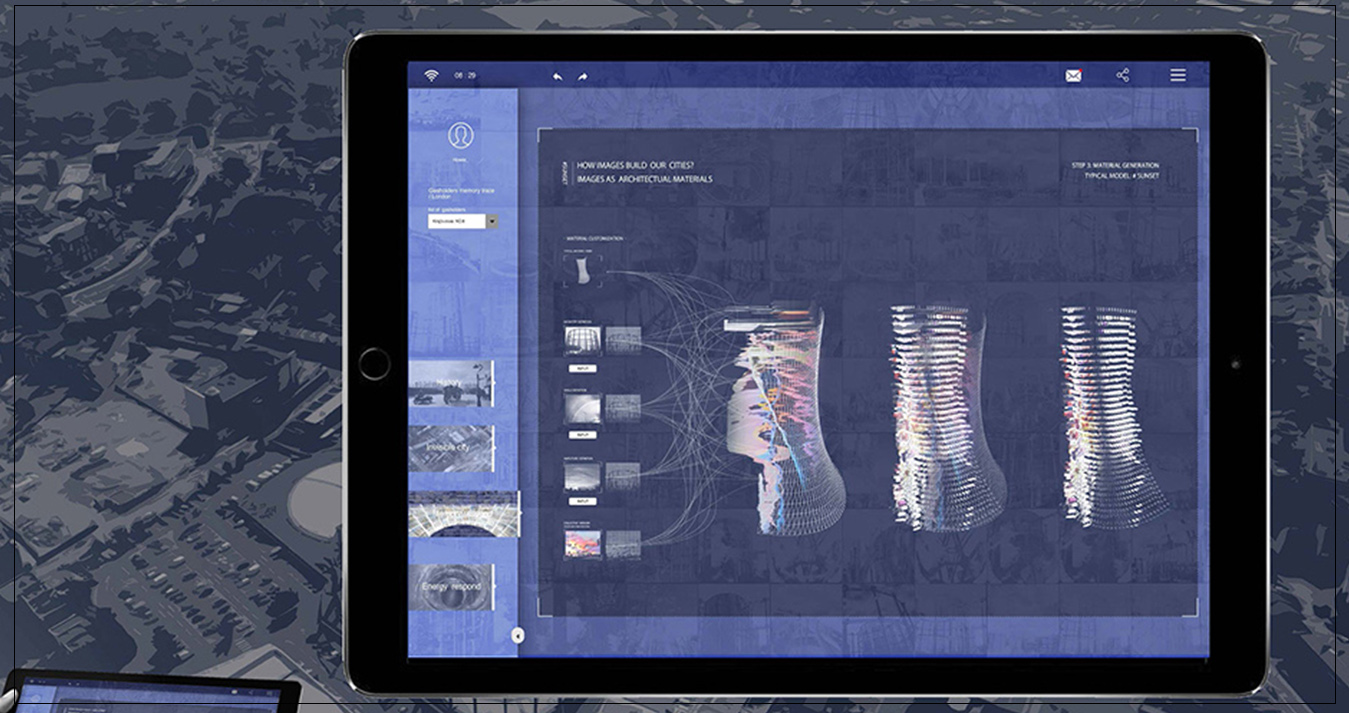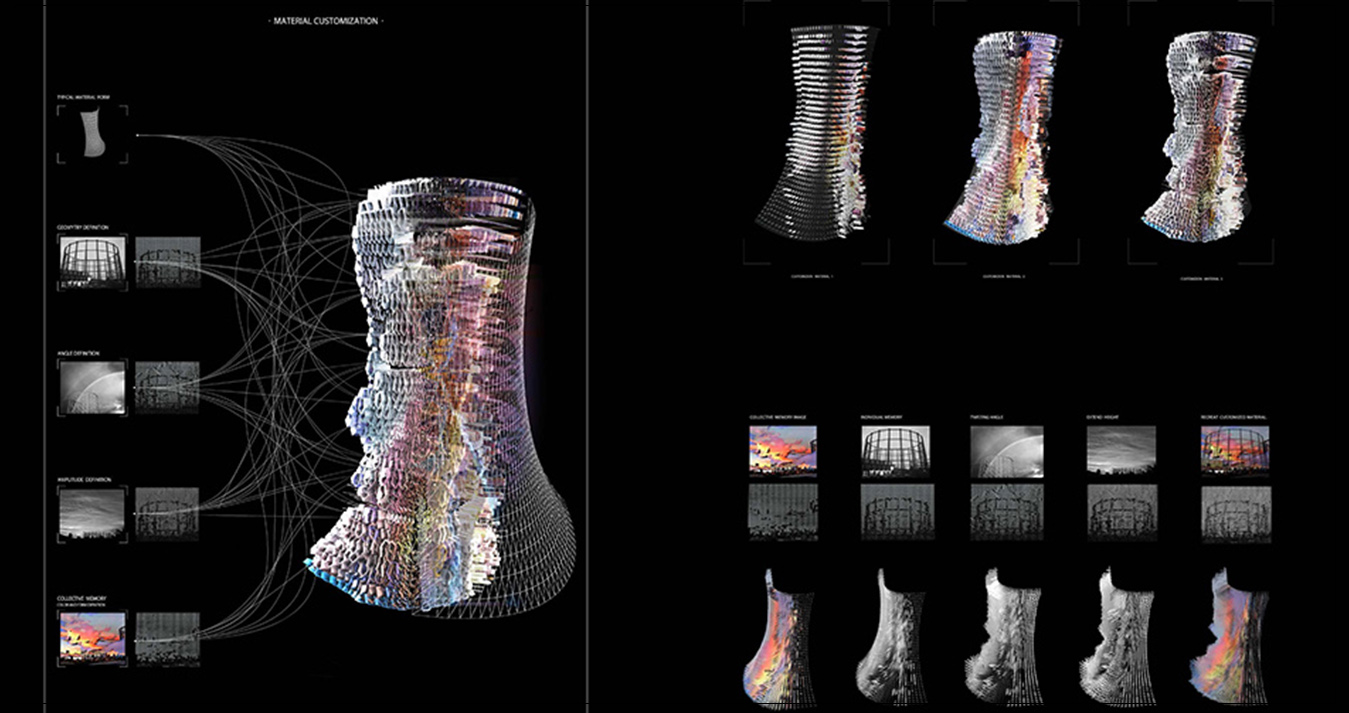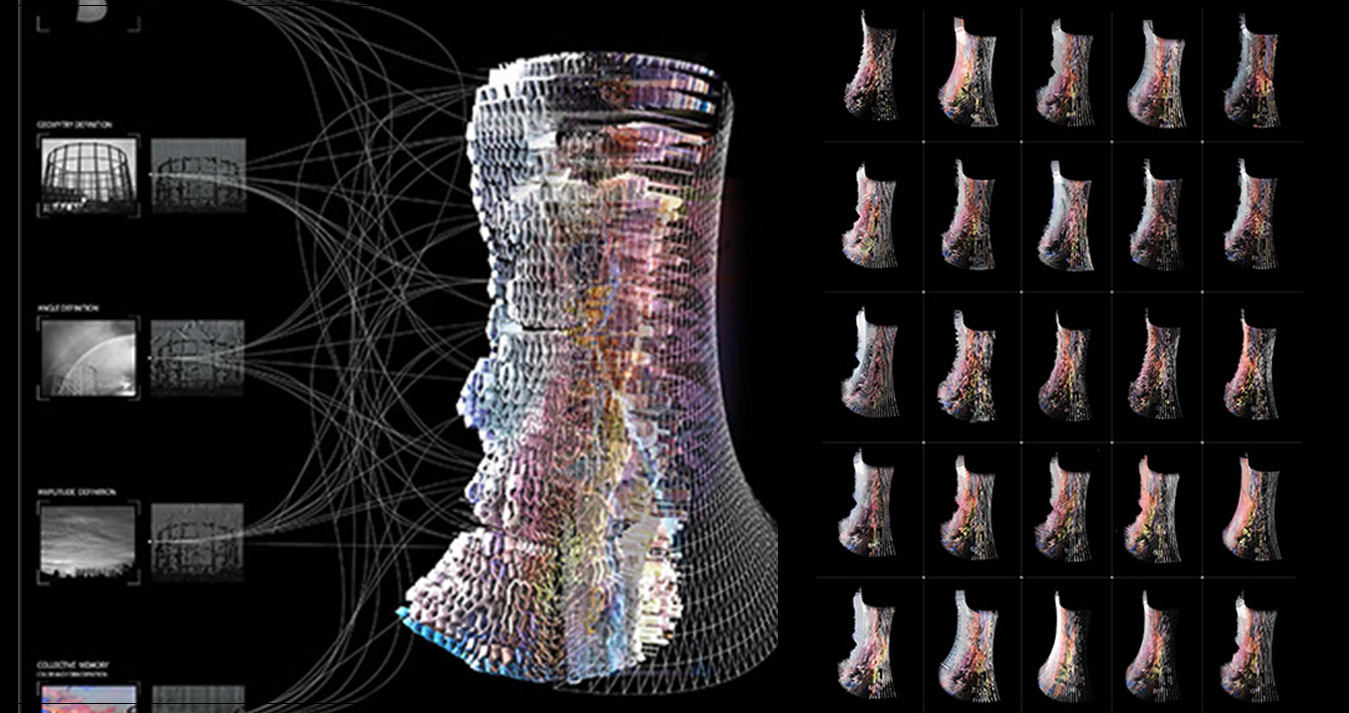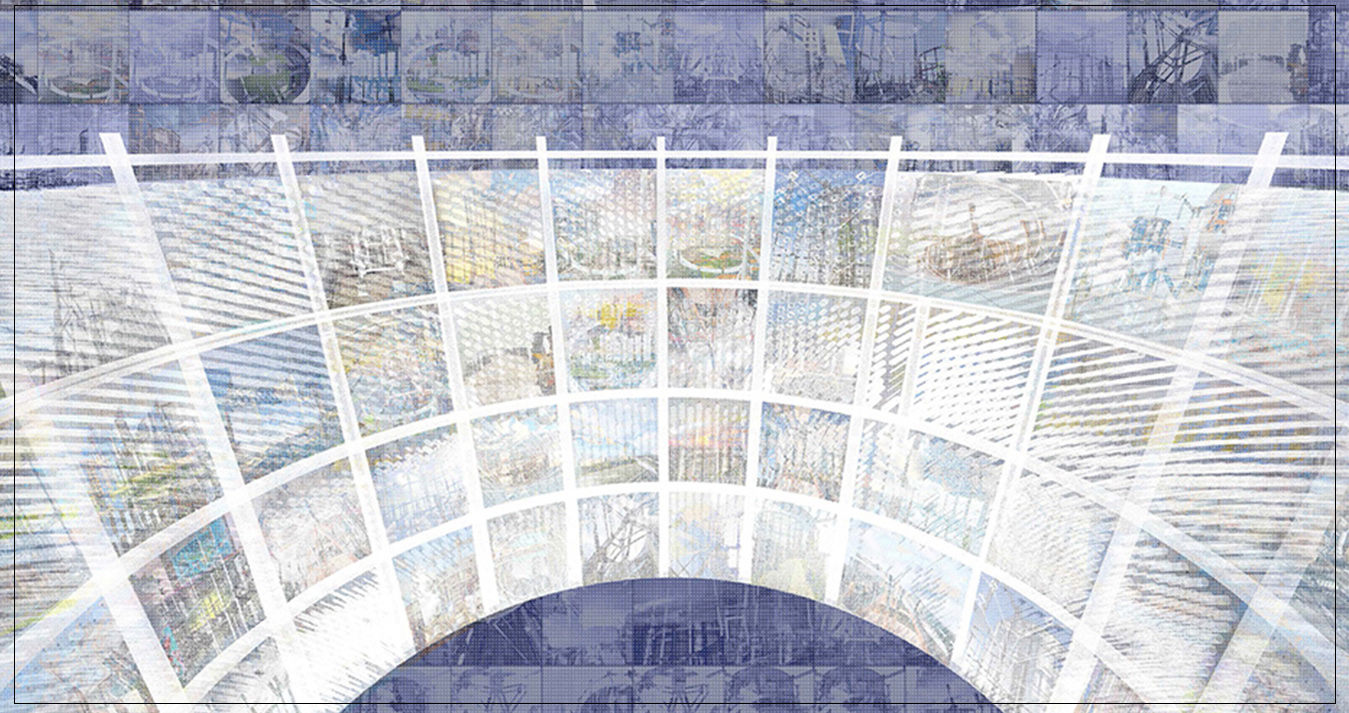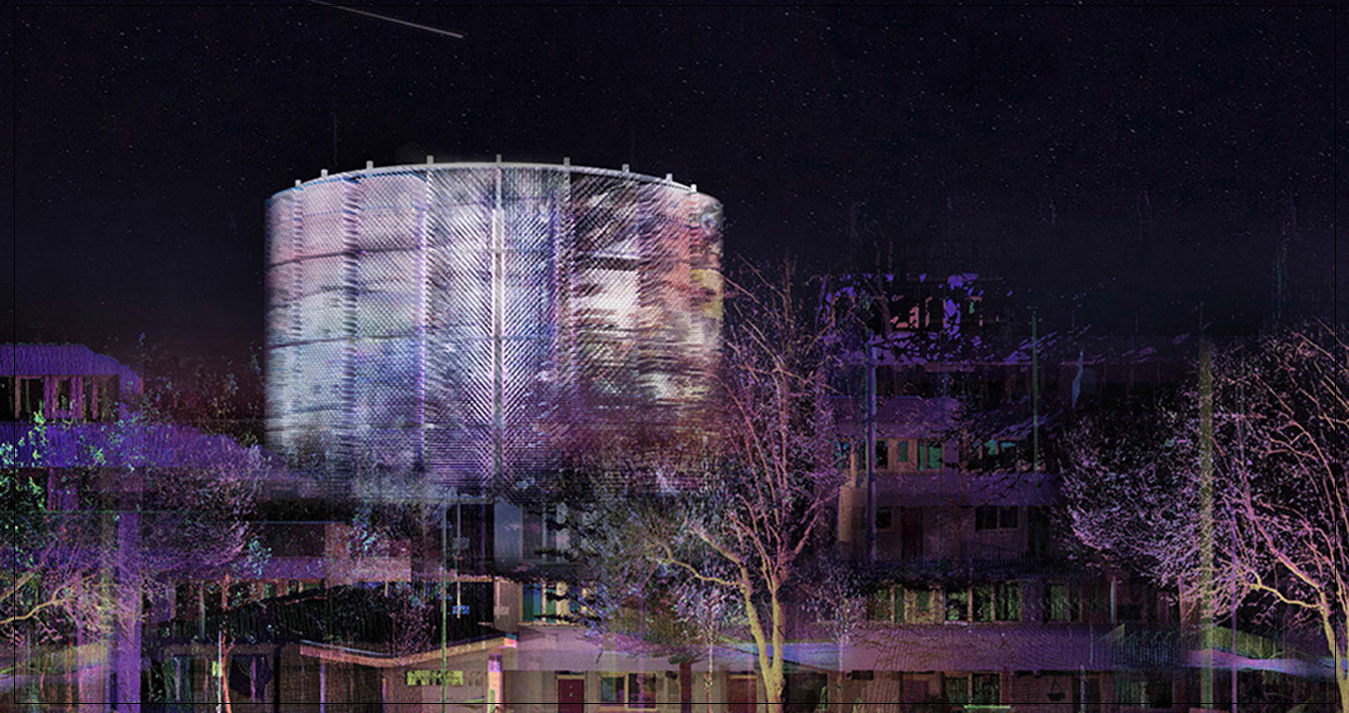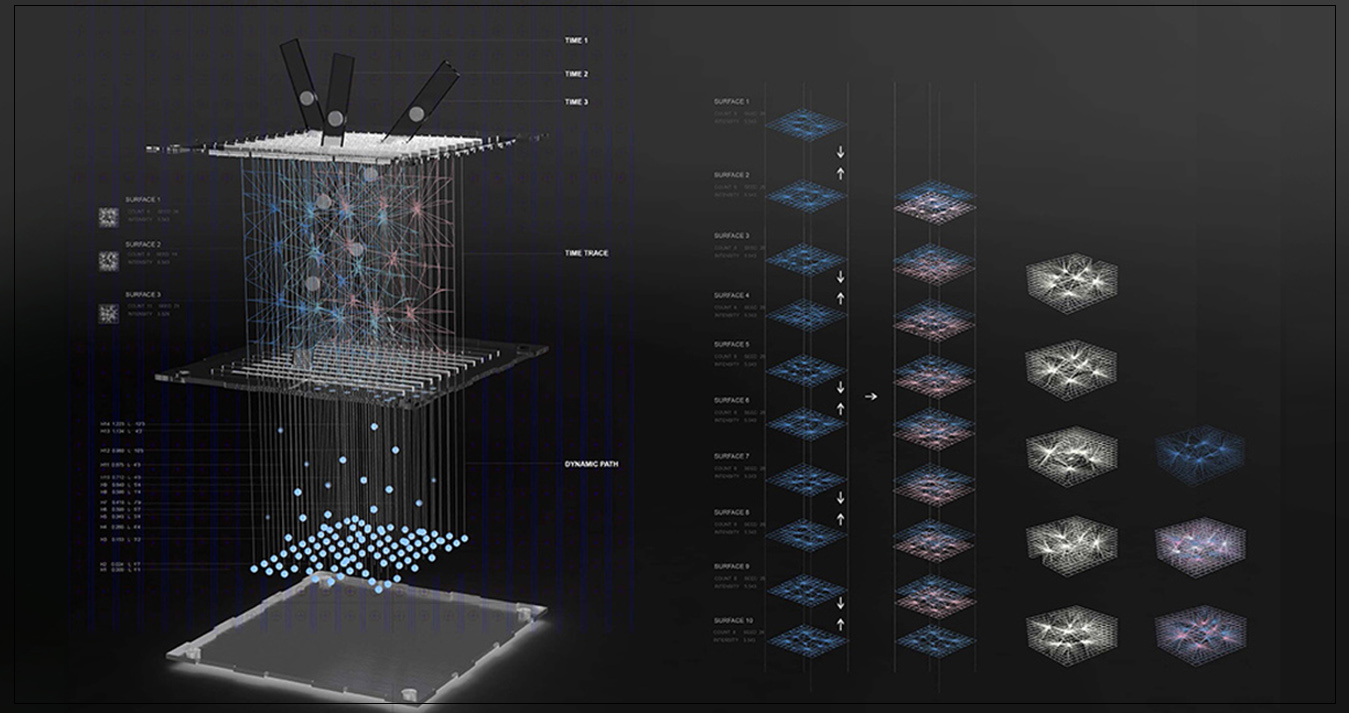
Memory Holder
Memory holder investigates the application of AI technologies, data mining methods and sentiment analysis in a design process. Particularly the project looks at how digital technologies can be turned into an interactive design tools to London Gasholders engaging online communities in discussions about the meaning of places and historical values. Invented at the end of the XIXC, Gasholders were scattered across the country with the purpose of storing gas and meeting households demands. They consisted of a metal exoskeleton and a telescopic vessel that would go up and down as the container was full or empty. Part of British Industrial Heritage, its scale and specific aesthetic value they became a landmark in the city. Currently gasholders are no longer in use; many of them have been dismantled. There has been an ongoing conversation about with history With the renewal and development of urban space, the change of times has changed the urban form and function, and people’s needs are also changing. In the process of urban change, historical sites play a special role in urban space. Because of its social significance, historical sites can be preserved in ever-changing cities. But meanwhile, it is also faced with the need to adapt to the new era, especially those historical sites that have lost their original functions. The renewal and development of historical sites should not only take into account human factors such as historical features, but also meet current urban needs and sustainable development in the future. In addition, with the development of the city, the heritage is bound to record the rich collective memory of the city, which is also an invaluable resource of the heritage, and a significant feature that is different from the general urban space. Therefore, the basic starting point for renewing the relics is to discover the past, the relationship between the present and the future, and the needs of different eras and different groups through the collective memory of the relics.
- [Category] MArch Design Thesis
- [Institution] BPro RC18. Bartlett School of Architecture
- [year] 2018-2019
- [Leaders] Enriqueta Llabres and Zach Fluker
- [Students] Hongyui Du, Peixin Shi, Yiting Tang
- [Tutors] Giulio Dini, Martyn Carter, Bernadette Devilat and Nuria Alvarez-Lombardero
Memory Holder
Memory holder investigates the application of AI technologies, data mining methods and sentiment analysis in a design process. Particularly the project looks at how digital technologies can be turned into an interactive design tools to London Gasholders engaging online communities in discussions about the meaning of places and historical values. Invented at the end of the XIXC, Gasholders were scattered across the country with the purpose of storing gas and meeting households demands. They consisted of a metal exoskeleton and a telescopic vessel that would go up and down as the container was full or empty. Part of British Industrial Heritage, its scale and specific aesthetic value they became a landmark in the city. Currently gasholders are no longer in use; many of them have been dismantled. There has been an ongoing conversation about with history With the renewal and development of urban space, the change of times has changed the urban form and function, and people’s needs are also changing. In the process of urban change, historical sites play a special role in urban space. Because of its social significance, historical sites can be preserved in ever-changing cities. But meanwhile, it is also faced with the need to adapt to the new era, especially those historical sites that have lost their original functions. The renewal and development of historical sites should not only take into account human factors such as historical features, but also meet current urban needs and sustainable development in the future. In addition, with the development of the city, the heritage is bound to record the rich collective memory of the city, which is also an invaluable resource of the heritage, and a significant feature that is different from the general urban space. Therefore, the basic starting point for renewing the relics is to discover the past, the relationship between the present and the future, and the needs of different eras and different groups through the collective memory of the relics.


